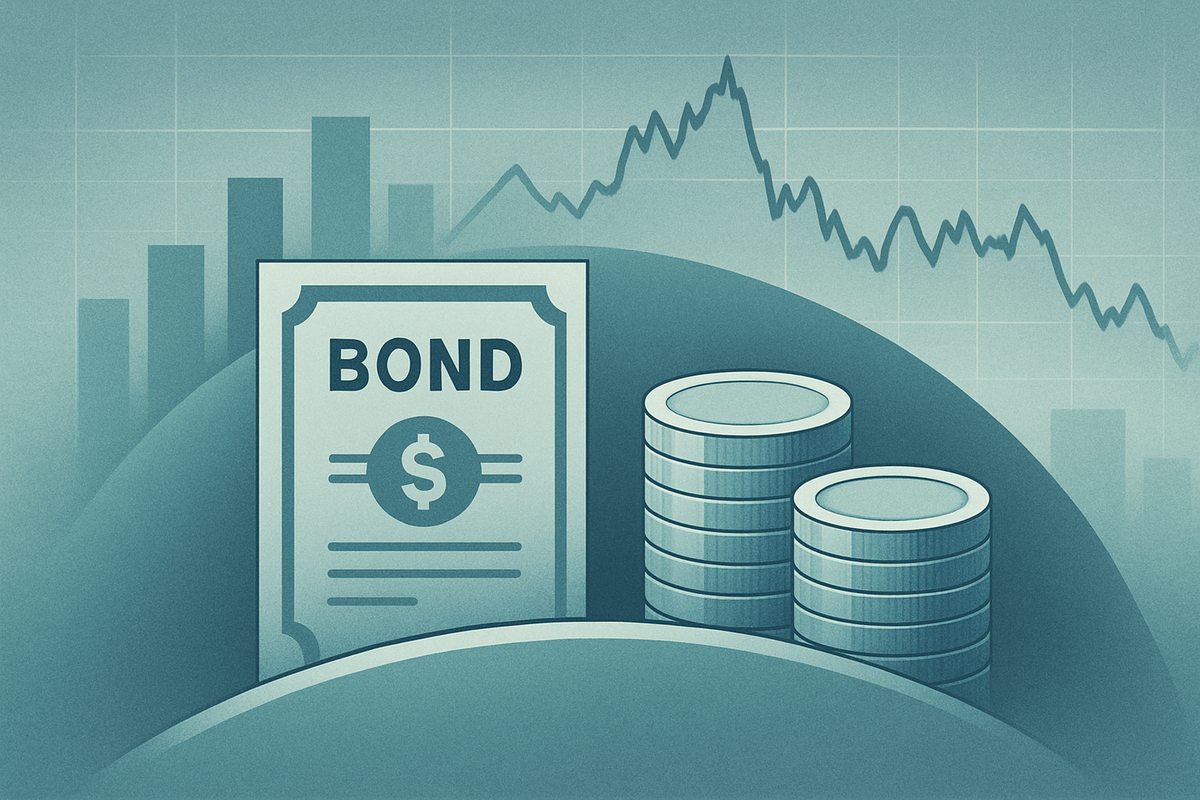
As October 2025 progresses, a palpable shift in investor sentiment is evident across US financial markets, with recent fund flow data signaling a clear pivot towards defensive strategies. Faced with persistent economic uncertainties and lingering geopolitical concerns, investors are increasingly reallocating capital from riskier growth assets into more stable, capital-preservation-focused instruments. This cautious approach is reshaping the landscape of various fund types, highlighting a collective effort to navigate turbulent waters and safeguard portfolios against potential downturns.
The observable trend of money flowing into bond funds, particularly those focused on government and high-quality corporate debt, alongside a notable surge in money market fund holdings, underscores a "risk-off" mentality. Concurrently, equity funds, especially those concentrated in cyclical or high-growth sectors, are experiencing subdued inflows or even outflows. This reallocation reflects a cautious outlook, where the allure of steady income and lower volatility outweighs the pursuit of aggressive capital appreciation, indicating that market participants are bracing for potential headwinds.
The Great Reallocation: A Deep Dive into Defensive Shifts
The defensive pivot in US fund flows is characterized by several key movements across asset classes. Investors, grappling with an unpredictable economic outlook and ongoing inflationary pressures, are prioritizing stability. Fixed income funds, particularly those holding US Treasuries and investment-grade corporate bonds, have emerged as primary beneficiaries. These instruments are perceived as safe havens, offering a reliable income stream and a relatively stable store of value compared to more volatile equities. The demand for these bonds has consequently pushed their prices up, albeit potentially compressing future yields for new entrants.
Money market funds are also witnessing a significant uptick in inflows. These funds, acting as highly liquid cash equivalents, provide a secure parking spot for capital, offering modest returns while ensuring immediate access to funds. This surge suggests that many investors are choosing to sit on the sidelines, awaiting clearer market signals or more attractive entry points, rather than exposing their capital to perceived elevated risks in equity markets. On the flip side, equity funds, particularly those focused on technology (NASDAQ: NDX), consumer discretionary (NYSEARCA: XLY), and other growth-oriented sectors, are experiencing a slowdown in momentum. While not a wholesale exodus, the reduced appetite for riskier equities indicates a broad reassessment of growth prospects and a preference for resilience over aggressive expansion.
Winners and Losers: Corporate Impact of Defensive Fund Flows
The current shift in fund flows creates distinct winners and losers among public companies and sectors. Companies operating in defensive sectors are likely to see increased investor interest and potentially more stable stock performance. Utilities (NYSEARCA: XLU), consumer staples (NYSEARCA: XLP), and healthcare (NYSEARCA: XLV) companies are typically considered defensive due to the consistent demand for their products and services, regardless of economic cycles. For instance, established giants like Johnson & Johnson (NYSE: JNJ), Procter & Gamble (NYSE: PG), and Duke Energy (NYSE: DUK) may find their stocks more resilient or even attractive to investors seeking stability and reliable dividends.
Conversely, companies in cyclical sectors, such as industrials (NYSEARCA: XLI), materials (NYSEARCA: XLB), and especially high-growth technology firms, may face headwinds. Companies like Tesla (NASDAQ: TSLA) or Nvidia (NASDAQ: NVDA), which thrive on strong economic expansion and investor appetite for risk, could experience reduced investor demand, impacting their valuations. Financial institutions (NYSEARCA: XLF), particularly those with significant exposure to lending or capital markets, might also navigate a more challenging environment if economic activity slows and credit risk rises. Asset management firms like BlackRock (NYSE: BLK) and Vanguard, which manage a diverse range of funds, will likely see a reallocation of their assets under management, with growth in fixed income and money market offerings offsetting potential slowdowns in equity fund growth.
Broader Implications: A Tectonic Shift in Market Dynamics
This pronounced shift towards defensive strategies is not merely a fleeting trend but reflects deeper anxieties within the financial ecosystem. It aligns with broader industry trends of increased market sensitivity to macroeconomic data, central bank policies, and geopolitical events. The Federal Reserve's (FED) ongoing efforts to manage inflation, coupled with the potential for higher-for-longer interest rates, has undoubtedly influenced this cautious stance. Historically, periods of rising rates or economic uncertainty often lead to similar defensive rotations, as investors seek to protect capital from erosion.
The ripple effects extend beyond individual companies and sectors, potentially influencing regulatory discussions around market stability and investor protection. Policymakers may scrutinize liquidity in various markets, particularly if money market funds swell to unprecedented levels, raising questions about systemic risk. Comparing this period to historical precedents, such as the lead-up to the 2008 financial crisis or the dot-com bubble burst, reveals a similar pattern of flight to quality when speculative excesses or economic vulnerabilities become apparent. While the specific triggers and conditions differ, the underlying investor psychology of seeking safety remains a constant. This current environment emphasizes the market's sensitivity to perceived risks, pushing investors to re-evaluate their long-term strategies.
What Lies Ahead: Navigating the Defensive Landscape
Looking ahead, the short-term outlook suggests a continuation of this defensive posture, particularly if economic data remains ambiguous or if central banks maintain a hawkish stance. Investors should anticipate sustained demand for high-quality fixed income and money market instruments. This could lead to further yield compression in safer assets but also offer a buffer against potential equity market volatility. For companies, strategic pivots towards robust balance sheets, consistent profitability, and strong free cash flow generation will become paramount to attracting cautious capital.
In the long term, the duration of this defensive cycle will largely depend on the evolution of inflation, interest rates, and global economic stability. A clear resolution to current uncertainties or a significant shift in monetary policy could trigger a renewed appetite for risk, leading to capital flowing back into growth-oriented equities. However, until such clarity emerges, market opportunities may lie in identifying undervalued defensive stocks or in niche fixed-income segments that offer attractive risk-adjusted returns. Challenges will persist for highly leveraged companies or those with speculative business models, as investors prioritize financial strength and proven profitability. Potential scenarios range from a prolonged period of low-growth, high-caution investing to a rapid rebound in risk appetite if economic conditions improve unexpectedly.
Concluding Thoughts: Prudence in a Volatile Era
The current landscape of US fund flows provides a compelling narrative of investor prudence and a heightened awareness of market risks as of October 2025. The discernible shift towards defensive strategies, characterized by strong inflows into fixed income and money market funds and a more cautious approach to equities, underscores a prevailing sentiment of capital preservation. This rebalancing act is significantly impacting public companies, favoring those in stable, essential sectors while posing challenges for growth-dependent entities.
Moving forward, investors should remain vigilant, closely monitoring macroeconomic indicators, central bank communications, and geopolitical developments that could influence market sentiment. The emphasis on quality, stability, and liquidity is likely to persist, making robust financial health a key differentiator for companies seeking investor confidence. The lasting impact of this defensive phase will shape portfolio construction for months to come, reinforcing the adage that in times of uncertainty, capital safety often takes precedence over aggressive growth pursuits.
This content is intended for informational purposes only and is not financial advice





